by Lisa Cooke | Jul 26, 2017 | 01 What's New, Archives, Records & databases
Original manuscript records may reveal genealogical gems about your ancestors. Find these old records in archives around the country using this little-known, free online tool: ArchiveGrid.
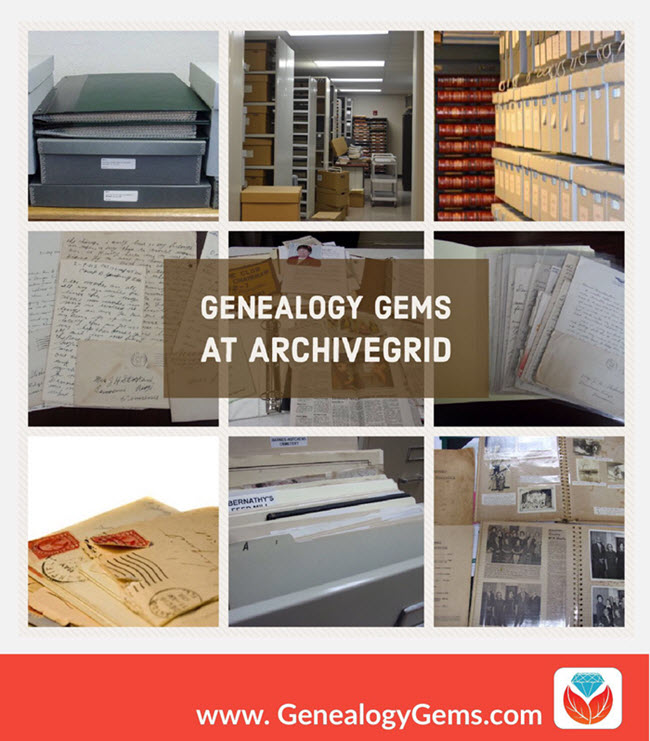
Manuscript records such as old diaries, letters, vital record collections, military documents, church registers, store ledgers, school and even business records can be genealogical gems. But finding original manuscript collections in archives and libraries can be difficult. Which archive has it? What’s the collection called? How can you access it?
ArchiveGrid can help
A little-known free website can help you locate old documents and manuscript items available in over 1,500 different archival collections. It’s called ArchiveGrid, and it currently includes close to 5 million archival item entries!
ArchiveGrid is a companion website to WorldCat, the free online catalog of millions of library items from thousands of libraries. The difference is that ArchiveGrid focuses not on published items but (generally-speaking) on unpublished ones.
How to search ArchiveGrid
From the ArchiveGrid home page, you can do two types of searches:
Search for repositories in ArchiveGrid
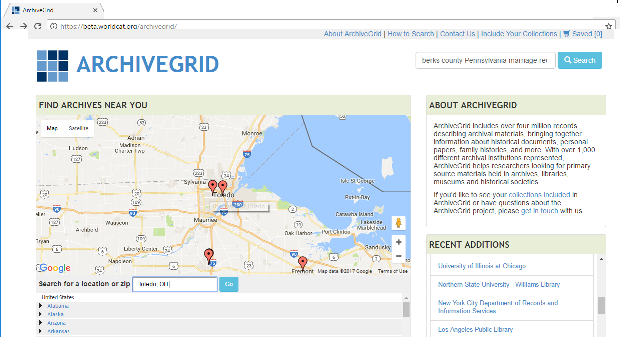
Use the map view, shown above on the left side, to identify archival collections that are near your ancestors’ home. These archives may hold materials related to your ancestors’ communities. Hover over the red markers to see the names of institutions. Click on them to find contact information and search their collections.
Search for specific manuscript items in ArchiveGrid
1. In the search box in the upper right part of the ArchiveGrid home page, enter search terms related to the manuscript items you hope to find, such as berks county pennsylvania marriage records. Then click Search. You’ll see a list of search results, such as these:
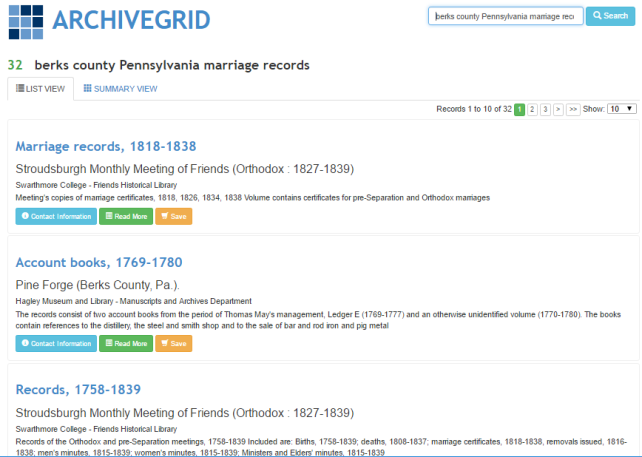
2. Browse search results. If you need to narrow or broaden your results, you can scroll to the bottom of the search results page and click the options you want.
3. Click on items of interest to read more about them. Here’s what a typical ArchiveGrid catalog entry looks like:
 The entry tells you more about the individual item. You may see when it was created, a physical description of it, who or what organization created it, and even brief historical background. You’ll see what repository holds it–and you can click under the name of that repository for its contact information. You may be able to order copies, visit to view the item in person, or hire a local researcher to do that for you.
The entry tells you more about the individual item. You may see when it was created, a physical description of it, who or what organization created it, and even brief historical background. You’ll see what repository holds it–and you can click under the name of that repository for its contact information. You may be able to order copies, visit to view the item in person, or hire a local researcher to do that for you.
As you can see, a sidebar to the right of this catalog entry says More Like This, with categories like people, places, groups, or topics. These links point to additional catalog items that are related in some way to the one you’re looking at—it’s something like browsing the stacks by topic at a library. (You can also sort all your search results this way from the main list of search results by clicking on Summary View.)
Now that the Family History Library is discontinuing its microfilm lending program, you may find yourself increasingly searching for original manuscript items that aren’t available online. And now that you know how to use ArchiveGrid, you may find yourself wanting to seek out these genealogical gems even more!
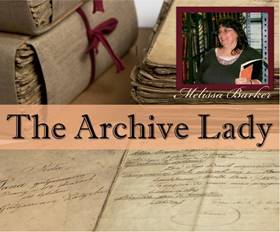 Learn More About Original Records
Learn More About Original Records
Learn more about finding and using original records from our new regular contributor on the Genealogy Gems podcasts: “The Archive Lady” Melissa Barker. Hear a full-length interview with her in the free Genealogy Gems Podcast episode #205. Genealogy Gems Premium website members can hear even more from her on finding and using original records in the Genealogy Gems Premium Podcast episode #149.
Photos used in the collage in this post are courtesy of Melissa Barker.
by Lisa Cooke | Aug 31, 2011 | images, Research Skills
“Mama arrived with 4 year old Martha gripping her hand tightly. She said she looked feverishly around for Papa, and spotted him across the room. She ran to meet him and gave him a kiss, which she normally would never have done in public!”
That was the scene my Grandma described as Louise and Gustaf reunited near a wooden column outside the Registry Room at Ellis Island aptly known as “The Kissing Post.” Many public displays of affection took place there after long journeys across the ocean.
Approximately 12 million immigrants were processed through Ellis Island between 1892 and 1954. It seems like only yesterday that the long dilapidated buildings were finally restored and reopened to the public. They have become one of the most popular tourist destinations in New York City, welcoming over 35 million visitors to date.
This month marks the 20th Anniversary of the Immigration Museum at Ellis Island which first opened on September 10, 1990.
According to a recent Ellis Island press release , “Just half a mile from the Statue of Liberty in New York Harbor, the museum’s exhibits highlight the growth of America during the peak immigration years of 1880-1924. The galleries illustrate the Ellis Island immigrant reception process, the immigrants’ arrival and settlement throughout the United States and feature their “Treasures From Home” – the cherished personal objects, photographs and papers they brought with them from their homelands. And the American Immigrant Wall of Honor® celebrates the immigrant experience with the inscription of the names of over 700,000 individuals and families who have been honored by their descendants.”
Of special note is the Ellis Island Oral History Archive, which was created by the Foundation and contains the reminiscences of over 1700 individuals who either immigrated through or worked at Ellis Island during its heyday as the country’s largest immigration processing center. If you are lucky enough to visit in person, you can listen to excerpts from these oral histories through the museum’s popular audio tour. You’ll walk the corridors vividly reliving the immigrant experience as if you were a “new arrival.”
If an in-person trip is not on your horizon any time soon, don’t fret. More than 1,700 first-hand life story audio recordings of Ellis Island immigrants are now available online for the first time free at Ancestry.com.
“As immigrants created new lives in the U.S., the stories of their homelands and their remarkable journeys to America were often lost,” said Christopher Tracy, senior vice president of global content for Ancestry.com. “We are thrilled to offer people the opportunity to hear the voices of their ancestors sharing stories of their lives.”
The oral histories were originally recorded by the National Park Service starting in the 1970s, and contain first-hand accounts recalling the lives these immigrants left behind, their reasons for leaving and their incredible and often-trying journeys to America. In addition to oral histories from immigrants, the collection also includes recordings from former Ellis Island/Statue of Liberty workers, and military personnel who were stationed on Ellis Island.
“To our family it is important that we in the U.S. know the origin of the people who came to this country, settled here and made it what it is today. It makes us very proud to know that our mother was part of this,” said Yvonne Rumac, daughter of oral history participant Estelle Belford, who immigrated to the United States from Romania via Ellis Island in 1905.
And if you are interested in learning more about your own immigrant ancestors here are some resources for you:
(Comprised of more than 170 million records, the Ancestry.com U.S. Immigration Collection includes lists of passengers who immigrated by ship to America between 1820 and 1960, including those who came through Ellis Island; more than 7 million citizenship and naturalization records; border crossings, passport applications and more to help reconstruct our ancestors’ journeys and early lives in America. Ancestry.com has also added nearly 2 million new U.S. naturalization record indexes.)
The FamilySearch Wiki
A brain trust of some of the best researchers out there, the FamilySearch Wiki allows you to search on keywords to learn more about a vast array of topics including immigration. Much of the information comes from the experts who work at the Family History Library in Salt Lake City. You get the benefit of their immigration research knowledge from the comfort of your own home.
Stephen P. Morse’s One Step Pages
If your search at the EllisIsland.org website doesn’t retrieve your ancestors head on over to Stephen Morse’s One Step Pages. There you will find dozens of links to search resources including the Ellis Island Gold Form for arrivals between 1892 and 1924. Even the folks at Ellis Island refer researchers to Morse’s site. Listen to my interview with Stephen Morse on Genealogy Gems Podcast episode #10
Family History: Genealogy Made Easy Podcast Episodes on Immigration and Naturalizaton
Genealogist Steve Danko covers immigration and naturalization in depth in episodes 29, 30, and 31. Steve even offers up some little known tips about deciphering some of the crytic notes researchers often find on passenger lists.
by Lisa Cooke | Aug 30, 2019 | 01 What's New, Records & databases
Not everyone was on vacation this summer. Genealogy companies and archives have been busy adding new records to their online collections.
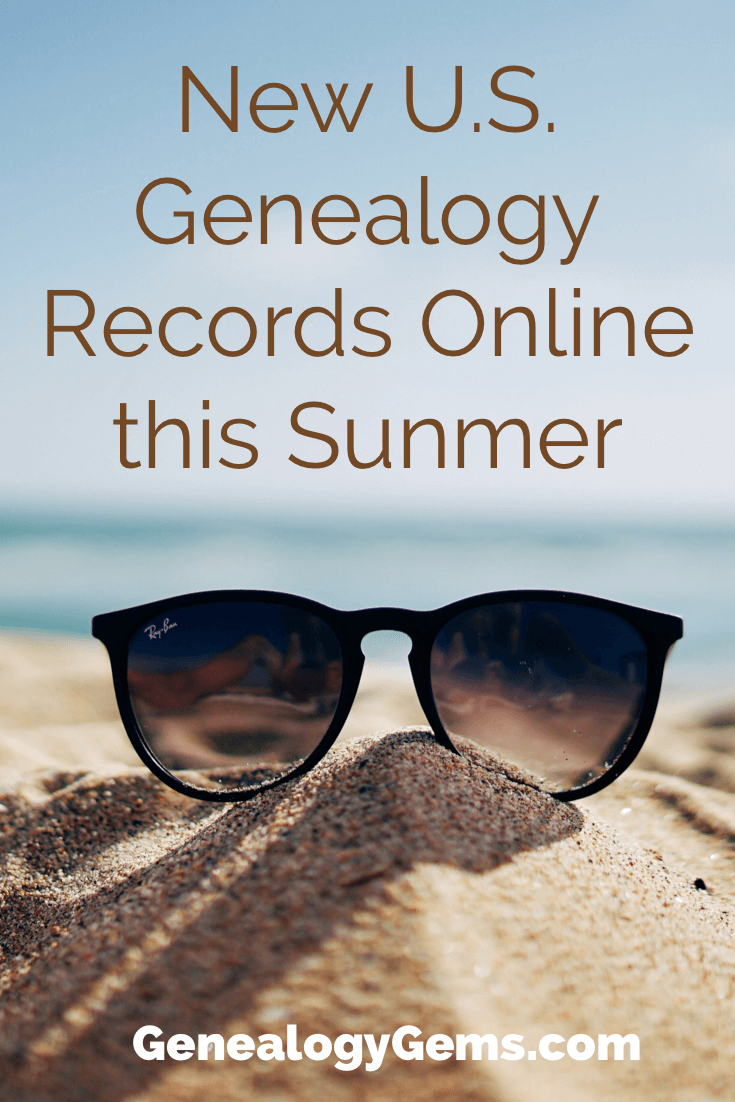
Mississippi Newspapers
In late July 2019 the Mississippi Department of Archives and History announced that “More than 238,000 pages of out-of-copyright Mississippi newspapers are currently online, with approximately 90,000 more pages expected to go online in the next six months.”
According to their press release: Researchers from around the world now have free online access to hundreds of Mississippi newspapers. The Mississippi Department of Archives and History (MDAH) participated in the National Digital Newspaper Program, a project funded by the National Endowment for the Humanities (NEH) to digitize newspapers across the country. The publications are accessible through the Library of Congress on its Chronicling America website, along with papers from other participating states.
“Primary sources are key for students because it makes history relatable,” said Al Wheat, MDAH director of education and co-coordinator of Mississippi History Day. “Every year we send students to the National History Day competition, which offers two prizes to students who made use of Chronicling America in their research. Instead of simply reading about a historical event, students can learn from the people who experienced that event through this exceptional website.”
MDAH has the most extensive collection of Mississippi newspapers in the state, housing more than 13,000 microfilm rolls of papers in its archival collections. NEH provided funding for the Mississippi digitization project through three, two-year grants.
Mississippi content includes titles published between 1820 and 1963 in fifty-three of the state’s eighty-two counties. Ninety antebellum titles, including papers published in Canton, Carrollton, Columbus, Holly Springs, Kosciusko, Panola, Port Gibson, Yazoo City, and Woodville, are online.
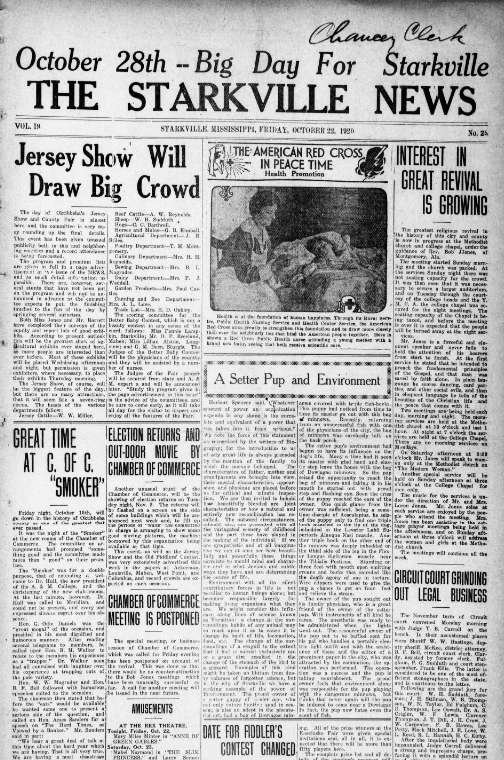
Twenty-three titles have at least one issue published between 1860 and 1865. Noteworthy Civil War-era titles include the American Citizen published in Canton, the Eastern Clarionpublished in Paulding, the Daily Clarion published in Meridian, the Macon Beacon, and the Oxford Intelligencer.
More than 100 newspapers document the Reconstruction era in the state through 1922. Included are titles from Aberdeen, Bay St. Louis, Corinth, Ellisville, Hernando, Liberty, Okolona, Philadelphia, Ripley, and Starkville.
A number of issues published between 1923 and 1963 will go online within the next six months. Included are several African American newspapers: the Jackson Advocate, the Southern Advocate published in Mound Bayou, and the Weekly Echo published in Meridian. Two newspapers that will go online won the Pulitzer Prize for Editorial Writing: the Lexington Advertiser edited by Hazel Brannon Smith and the Chronicle edited by Ira Harkey, Jr.
Access the newspapers for free at chroniclingamerica.loc.gov.
Another exciting free historical newspaper website!
Click the video below to watch:
Georgia Obituaries and Burial Records
The Madison GA Cemetery Stewardship Commission announced that the Madison Cemeteries website now has over 800 obits for our 4,000 burials, and they are adding more every day.
U.S. Genealogical Records at Findmypast
Pennsylvania, Oath of Allegiance
Did your ancestor arrive in Pennsylvania between 1727 and 1775 or between 1786 and 1808? This records hold the names of thousands of male immigrants who were required to take an oath of allegiance to the British Crown and the Province of Pennsylvania as well as immigration lists between 1786 and 1808. Within these pages you will find your ancestor’s name, the ship they arrived on, there and arrival ports, and arrival date. Names are organised by vessel.
All males over sixteen years of age were obliged to take this oath and declaration, as soon as after arrival as possible. The lists of foreigners arriving after 1786 including the names of wives and children. The full oath can actually be found on image number 9. An index to surnames begins on image number 675.
Pennsylvania Immigrants, 1727-1776
Explore this 1856 publication which, in its own words, is a ‘A Collection of Upwards Of Thirty Thousand Names Of German, Swiss, Dutch, French And Other Immigrants In Pennsylvania From 1727 To 1776: With A Statement Of The Names Of Ships, Whence They Sailed, And The Date Of Their Arrival At Philadelphia, Chronology.’
As well as names, these records may also provide you with historical and biographical notes. The prefece went on to add that ‘present descendants of the early German, Swiss and French immigrants, now numbering millions living in Pennsylvania, New York, Maryland, Virginia, and in the Western States, will be enabled, if they procure this publication, to ascertain the time of their ancestors’ arrival and other facts of value to most of them.’
United States, Passenger and Crew Lists has been created by merging all of Findmypast’s existing US passenger and crew lists with over 2 million brand new records covering Boston, Texas and South Carolina.
Spanning over 160 years of travel, this vast national collection brings together records of passengers and crew who arrived in America by ship or by plane, from the East Coast to the West Coast, between 1800 and 1964.
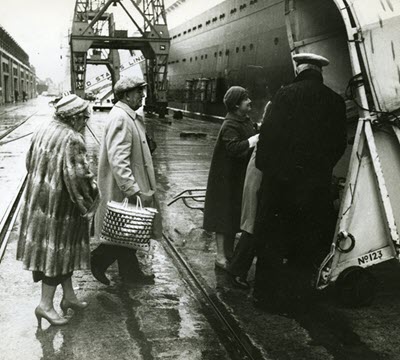
Passenger boarding in the 1950s.
Including ship manifests, crew lists, flight manifests, passenger arrival lists and more, the records document the arrival of millions of immigrant from Europe, Asia, and South America into the United States, where most settled to create a new life for themselves and their descendants.
A significant portion of the documents available within United States, Passenger and Crew Lists have been produced through a combination of historical records found at the National Archives & Record Administration (NARA) in Washington D.C. A number of the crew lists have also been made available by the Mystic Seaport Museum in Connecticut.
The collection also includes records provided in partnership with the John F Kennedy Trust Ltd, an organization which has worked with the Balch Institute, the Ellis Island Restoration Commission and the Battery Conservancy to compile a comprehensive database of Irish emigration to the United States.
Passenger lists are just one of many records that detail your family’s journey to the United States. Transcripts will reveal your ancestor’s birth year, birth place, place of arrival, arrival year and ship name.
Images will provide additional information such who your ancestor was traveling with, their occupation, last permanent residence, and the names of those who died during the voyage. On crew lists, you may discover your ancestors position on the chip, whether they were able to read or write, length of service, as well as a physical description.
United States, Passenger and Crew Lists
Over 777,000 new records from the major port city of Baltimore in Maryland have recently been added to these passenger and crew lists.
This national collection brings together records of passengers and crew who arrived in America by ship or by plane from the East Coast to the West Coast and will reveal where your ancestor was born, where they sailed from, where they arrived and when.
Billion Graves at FMP
Pinpoint your ancestor’s final resting place with new additions to our Billion Graves Cemetery Indexes. Our latest update includes:
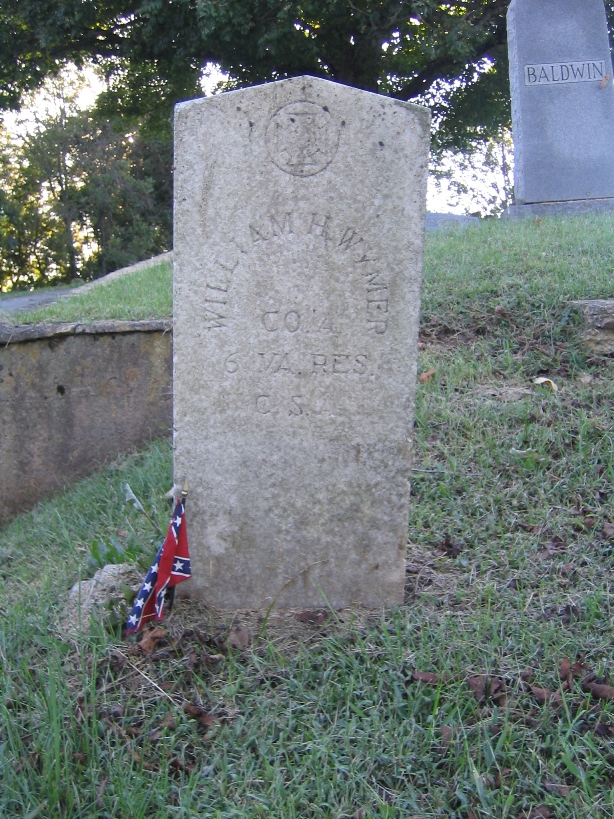
Tombstones are records too.
Cemetery records are of great importance in discovering where and when your ancestor died. They can also provide you with information regarding their birth and marriage dates.
With an abundance of cemeteries, it can be overwhelming trying to pinpoint the precise cemetery in which your ancestor was laid to rest, and visiting each potential location is costly. However, in partnering with BillionGraves, we aim to make available all the cemetery records held on their site for free, saving you time and money as you search for your ancestor.
BillionGraves is the largest resource for GPS-tagged headstone and burial records on the web, with over 12 million headstone records.



 The entry tells you more about the individual item. You may see when it was created, a physical description of it, who or what organization created it, and even brief historical background. You’ll see what repository holds it–and you can click under the name of that repository for its contact information. You may be able to order copies, visit to view the item in person, or hire a local researcher to do that for you.
The entry tells you more about the individual item. You may see when it was created, a physical description of it, who or what organization created it, and even brief historical background. You’ll see what repository holds it–and you can click under the name of that repository for its contact information. You may be able to order copies, visit to view the item in person, or hire a local researcher to do that for you. Learn More About Original Records
Learn More About Original Records



